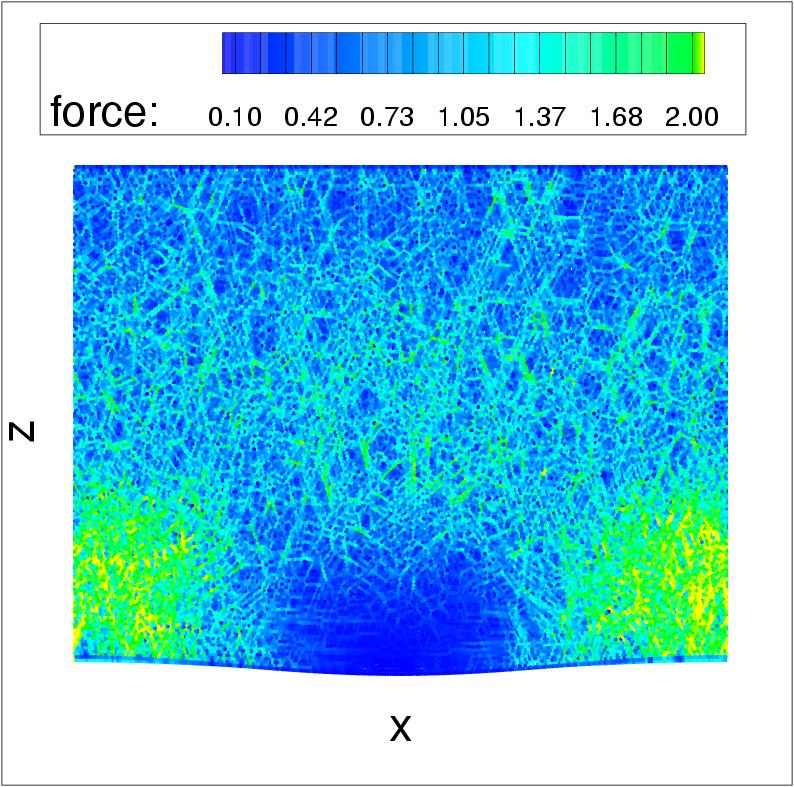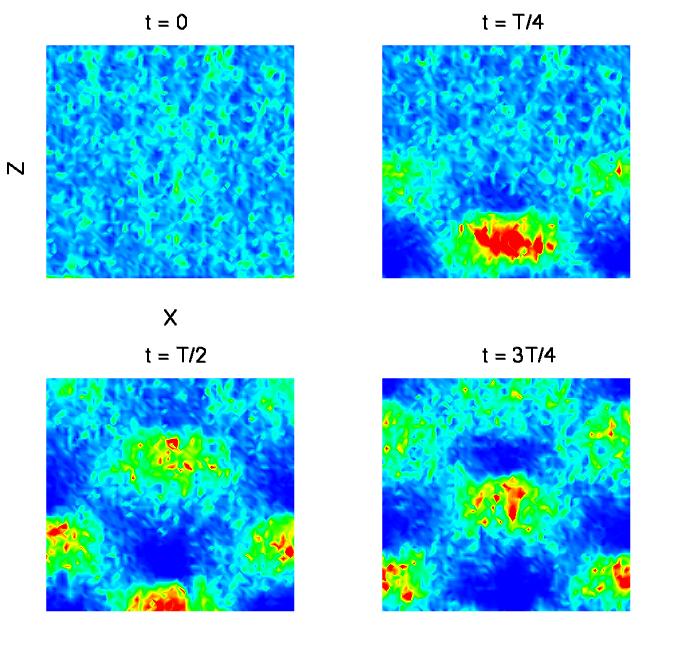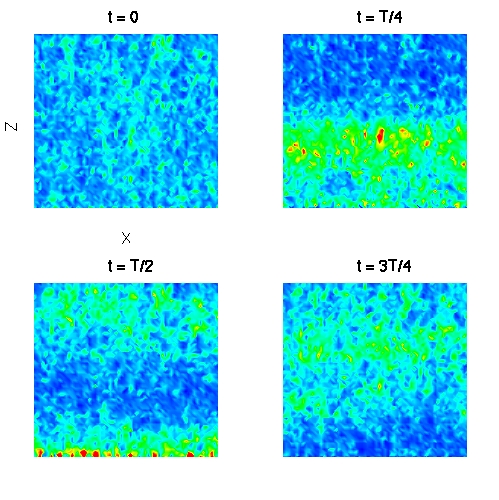
Signal propagation through granular systems
(NSF supported)
This page illustrates signal propagation through a dense granular system. Source of the signal is oscillating lower boundary, which follows imposed standing-wave type of oscillations of prescribed frequency f, wavelength lambda and amplitude A. The simulations are performed in 2D, with volume fraction of 90% (therefore, very dense system) using approximately 40,000 particles. Below, the frequency is expressed in units of Hz, and lambda and A in terms of average particle diameter, d. The particles are polydisperse (radius varies 10%), frictional, slightly inelastic (coef. of restitution = 0.9), and frictional. Volume fraction is fixed. There are physical walls top and bottom, and periodic boundary conditions are imposed on the right and left hand side of the domain. The walls are strongly absorbing in order to reduce reflection effects. More details about the techniques and results will be posted here as the research progresses.
Publications:
L. Kondic, O.M. Dybenko and R.P. Behringer, Phys. Rev. E, 041304 (2009)

Next we consider elastic energy and the fluctuations of elastic energy in the same system. We see that the fluctuations closely follow the elastic energy itself. Currently we are considering appropriate macroscopic model which would explain well the features of the propagating signal.

